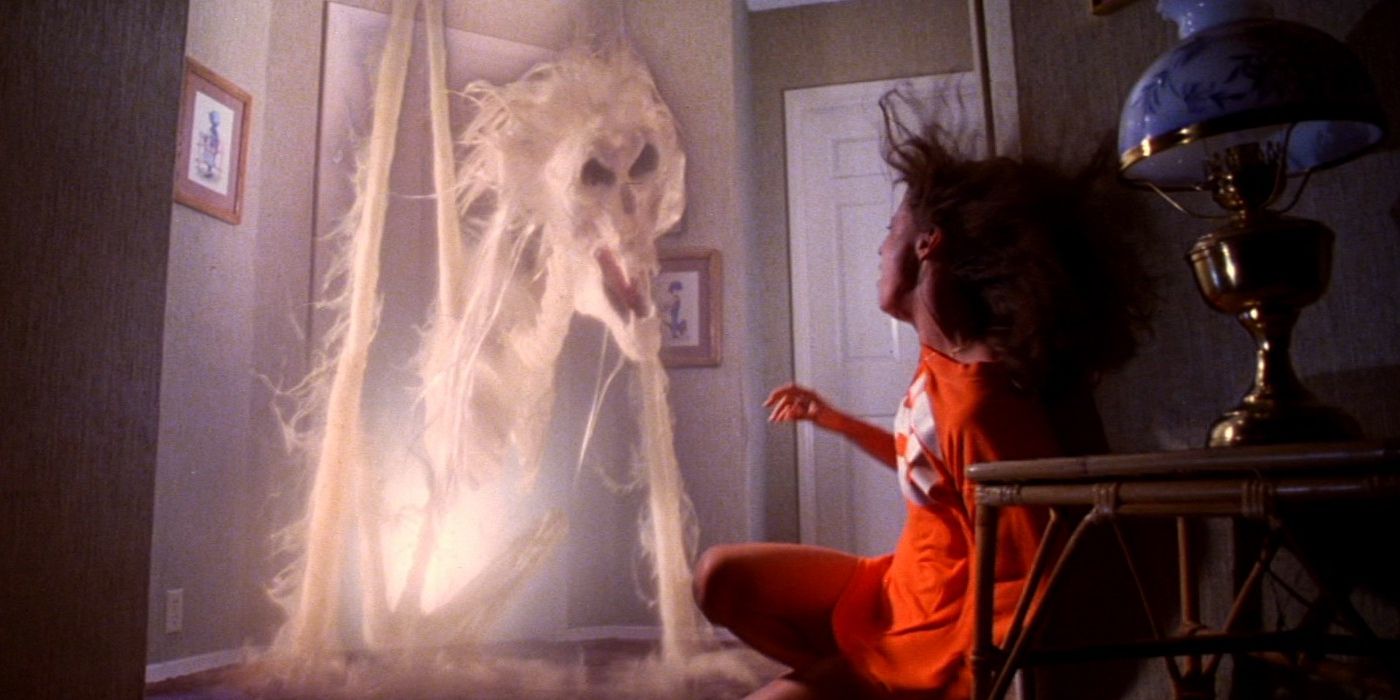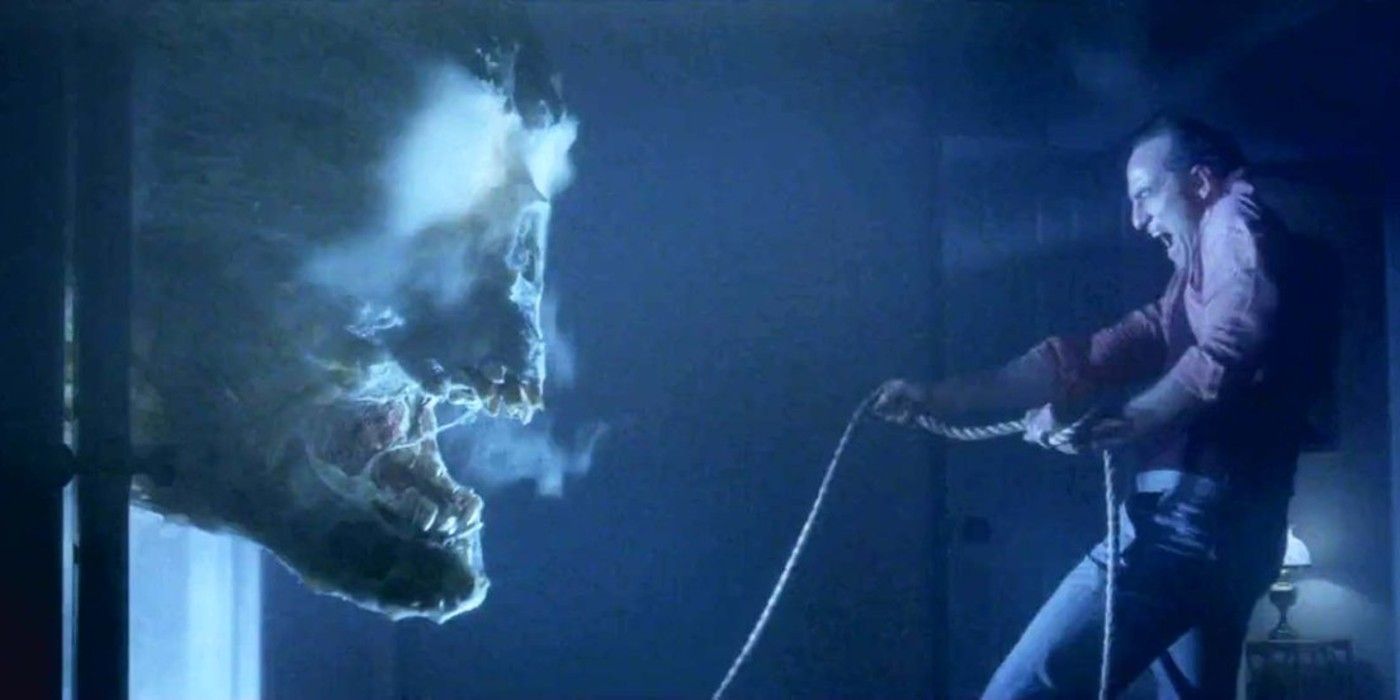Director Tobe Hooper and producer Steven Spielberg’s 1982 paranormal horror film Poltergeist featured some of the most intricate practical effects in the sub genre to date. From building spinning rooms to utilizing bizarre props, the special effects team created cutting-edge designs in order to make it one of the most extraordinary films to date.
The Poltergeist franchise exploded in popularity in the 80s that led to two sequels and a remake by Gil Kenan in 2015. It follows the Freeling family at the moment a malevolent poltergeist manifests in their quiet development that was, unbeknownst to them, built on top of a graveyard. The entity targets the youngest of the family, Carol Anne played by the late Heather O’Rourke. During the franchise’s production, rumors spread that the set was cursed due to the fact that Dominique Dunne (Dana Freeling) died shortly after its release and O’Rourke tragically died during the filming of Poltergeist III (1988).
Most theorists have blamed the use of real skeletons on set for the curse but that was quickly debunked by the prop department in the recent Shudder docuseries, Cursed Films. While this is the most recognizable effect used to capture the horror of Poltergeist, it overshadows the intricate designs that the special effects department labored over in order to make the iconic film so integral to horror history and the success of the franchise.
The Practical Effects That Defined The Poltergeist Franchise
Shortly after the film released in 1982, the team behind Poltergeist distributed a short on how the movie and the practical effects were made. They revealed that entire rooms were built and placed on a mechanism that spun with the director strapped into a chair. This particular practical effect was used in the scene where Diana Freeling (JoBeth Williams) is dragged across the walls and ceilings of her bedroom. This mechanism was created to flawlessly capture the scene in one fluid take that makes it appear effortless and leaves the viewer in disbelief of how it was even possible to capture it on film.
Nearly every scene in the film features a practical effect. Some of which include the large-scale version of Carol Anne’s bedroom portal, the hole in the ceiling, and the tree that attacks Robbie Freeling (Oliver Robins). The team went above and beyond in order to capture the severity of the poltergeist attacks on the Freeling family. Their efforts were not in vain. Poltergeist was a hit at the box office and blew every other horror film of that year out of the water with its success. It was even nominated for Best Visual Effects at the Academy Awards. Ultimately, the practical effects defined the original film and set the franchise up for success.
To this day, Poltergeist is unmatched in its ability to use practical effects in every single scene in the horror genre. It was a remarkable film then and it still is today. The resurgence of practical effects in the genre speaks to their immense importance in general and the uniqueness it provides to a movie. The cutting-edge special effects of Poltergeist defined the paranormal sub genre of horror and set the precedent for future films.


